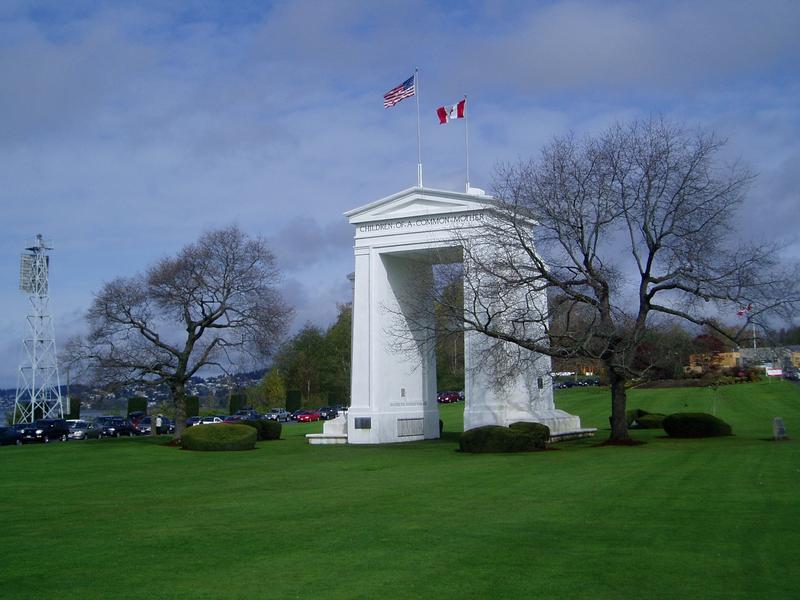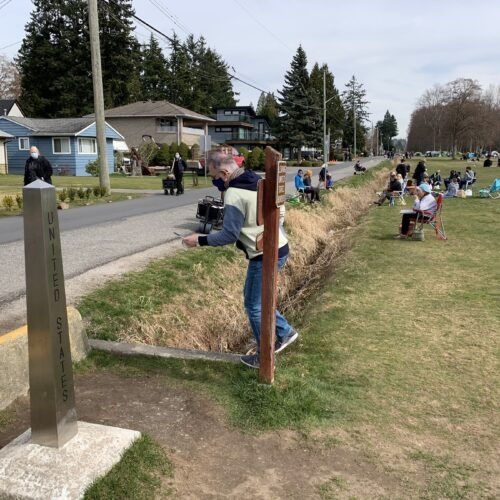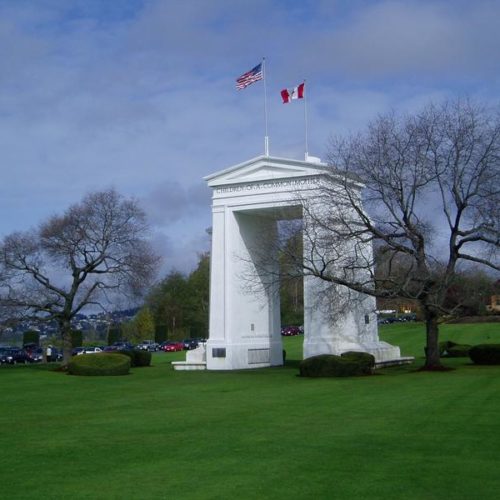
U.S.-Canada Border Closure Likely To Be ‘With Us For Awhile’ As Pandemic Persists
READ ON
The most recent extension of the U.S.-Canada border closure expires this Friday, November 21, but no one expects the restrictions to be lifted then. First implemented in March, the closure of the land and sea border to nonessential crossings have been extended monthly by mutual agreement between Ottawa and the Trump administration.
In an interview with public radio on Tuesday, Canadian ambassador to the U.S. Kirsten Hillman declined to speculate when the border might reopen, but it won’t be soon.
“The pandemic seems to be escalating in both of our countries,” Hillman said. “That would seem to suggest that these measures are with us for a while.”
Hillman said she was happy to hear concrete proposals from business and trade groups in the Pacific Northwest for how to safely ease the border closure in the future. An initial pilot project just launched in Alberta uses rapid COVID-19 testing to shorten quarantines for arriving travelers.
Hillman cautioned that getting back to normal will be a gradual process, not like flipping a switch.
Truck drivers and “essential” workers in fields like health care and energy are permitted to cross the border as normal as long as they have no symptoms. Canada, unlike the U.S. though, enforces a mandatory 14-day quarantine for all other arriving or returning travelers.
The ban on discretionary cross-border travel and the quarantine requirement has choked off most business travel and just about all tourist travel. That has caused significant hurt at favorite haunts of American visitors, such as Victoria and Vancouver, and at Canadian shopping destinations such as Bellingham and Spokane.
Earlier on Tuesday, Hillman and her American counterpart in Ottawa, acting U.S. ambassador Katherine Brucker, held a “listening session” with Pacific Northwest representatives from the tourism, travel and trade sectors. During that virtual meeting (co-hosted by the Pacific Northwest Economic Region and Victoria-based South Island Prosperity Partnership), speakers implored the ambassadors and their respective federal governments to consider ideas to adjust the border restrictions.
Hillman said in the subsequent interview that the variable progression of the COVID-19 pandemic makes it difficult to cite specific benchmarks or disease metrics that the governments will use to guide their border reopening decisions.
“There aren’t specific metrics where we can say, ‘If it hits X level, we’ll make Y decision,'” Hillman said. “That’s not how it works. It’s a little bit more of a conversation.”
An expert on the U.S.-Canada relations said as time goes on, it would be good to give more public guidance on the plans for a phased border reopening to let the business community prepare for the return of tourism and cross-border shopping, for example.
“We need to offer that kind of signalling. I think it is an essential part of the management of this pandemic,” said Christopher Sands, director of the Wilson Center’s Canada Institute, in a webinar. “We just haven’t seen that from the federal governments. I’m hopeful we will see that now.”
Sands said he has the impression there is strong popular support in both countries to keep crossing restrictions in place for the time being to contain the risk of a worse wave of new coronavirus infections.
The lengthy U.S.-Canada land border is normally the busiest in the world. But due to the pandemic-related crossing restrictions, the Canadian government says traffic across the border has fallen between 80%-95%, depending on the zone. Truck traffic has remained close to pre-pandemic levels under rules designed to maintain international supply chains.
Earlier this month, the Canadian federal government and the province of Alberta launched a pilot project to shorten the required quarantine period for international travelers. The trial allows eligible travelers arriving at two locations — Calgary International Airport and the Interstate 15 land border crossing (Sweet Grass, MT/Coutts, AB) — to take a free COVID-19 test there. A trial participant must quarantine at a residence until the test results come back in around two days. Should the test results come back negative, then the person can leave quarantine and go about their business in Alberta. Participants need to take a second test six or seven days after arrival to reconfirm the earlier negative result.
“The start of this unique trial is a significant first step in giving peace of mind to those who need to travel and were apprehensive due to the rigorous quarantine requirements and testing restrictions,” said WestJet Chief Commercial Officer Arved von zur Muehlen in a statement on November 2.
WestJet plans to resume Portland to Calgary airline service in early January, alongside a gradual ramp up in its international flights. The carrier currently offers limited flights from its Calgary hub to three U.S. destinations — Los Angeles, Palm Springs and Phoenix.
The executive director of the Pacific Northwest Economic Region, Matt Morrison, said other pilot projects are being planned to revive cross-border air, land and sea travel, including one focused on short hop flights between Seattle and Vancouver, B.C. That air travel project envisions multi-layered pre-travel COVID-19 testing of passengers.
Elsewhere along the northern border, the outlook is unchanged for the isolated enclave of Point Roberts, Washington. The only road connection to the stub of American land attached to the Vancouver suburbs goes through Tsawwassen, Delta and Surrey, British Columbia. Point Roberts residents — and Canadians who own second homes on the peninsula — want the enclave exempted from the limits on nonessential border crossings.
Ambassador Hillman said she was very familiar with the predicament of Point Roberts, not least because her mother lives close by in South Surrey, British Columbia.
“Discretionary travel is important to all people, including you and I,” said Hillman. “But right now, that travel is being limited for all Canadians and all Americans coming to Canada, including residents of Point Roberts.”
Because of the ongoing border closure, a Port of Bellingham spokesman said the port will continue a temporary ferry service to the isolated peninsula through the winter, as weather conditions allow. The port chartered a 100-passenger eco-tour boat to provide twice-weekly, passenger-only ferry service between the Point Roberts marina and the Bellingham Cruise Terminal. The free service, which requires advance reservations, began in August.
“It has been very well received by the folks in Point Roberts,” said Port of Bellingham spokesman Mike Hogan. “The port commission has directed us to continue providing service until the Canadian border opens to nonessential travel or until they decide differently.”
Related Stories:

Ongoing Border Closure Makes Washington Enclave Of Point Roberts ‘Stir Crazy’
The United States and Canadian governments confirmed Thursday that pandemic border crossing restrictions will continue for at least another month to June 21. This is the fourteenth month-by-month extension of the closure of the northern border to nonessential crossings. The lengthy closure has been especially wearing on Point Roberts, a community in northwestern Washington state that is cut off from the U.S. mainland by the Canadian border.

Couples And Families Separated By U.S.-Canada Border Closure Find Oasis At Peace Arch Park
This coming Sunday, March 21, will mark one year since the U.S. and Canada closed their shared border to nonessential crossings due to the pandemic. It’s anybody’s guess when the border might reopen for discretionary trips. In the meantime, every weekend rain or shine, Peace Arch State Park in Blaine, Washington, becomes a happening meetup point for couples and families separated by the northern border.

U.S. Borders With Canada And Mexico Will Remain Closed At Least Another Month
Bill Blair, Canada’s public safety minister, tweeted on Monday, “We are extending non-essential travel restrictions with the United States until November 21st, 2020. Our decisions will continue to be based on the best public health advice available to keep Canadians safe.”















